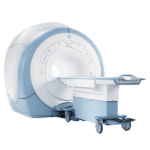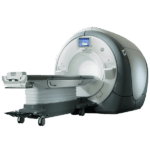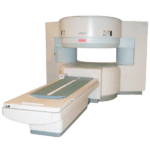MRI Phantoms and Control of Image Quality
Generating accurately rendered images is paramount to any radiological practice. The use of MRI phantoms in calibration and quality control ensures better image generation to make accurate diagnosis of diseases.
In this article we are going to talk about the different types of phantoms used and what they test on an MRI unit.
MRI units must consistently produce high-resolution images of anatomical structures to provide doctors with an appropriate treatment plan for patients.
Misdiagnosis from poor image quality alone can account for costly malpractice suits against radiology groups and hospitals throughout the world.
Distorted and unclear images can lead to delayed treatments, and undiagnosed or missed diseases. Patients are relying on a quick and accurate diagnosis. Any delay in the treatment plan can lead to more harm or death to the patient.
Here are three reasons to use an MRI phantom for quality control in the clinical environment
- A proper QC program for MR units is the law in America
- Imaging testing is Part of the quality control checklist for MR units.
- Scheduled phantom tests avoid costly malpractice suits. And finally, ensures image integrity
In the US Quality Control is the law (Medicare Improvement Patients and Providers ACT of 2008) MIPPA. The American College of Radiology requires a series of measurements tested with an MRI phantom on weekly/annual basis for a site to be accredited.
“having a good phantom and performing a series of weekly tests are important to the image integrity and keeping the site accredited. “
Imaging departments looking to purchase a new MR unit can use Phantoms to test different scanners for purchase. The phantoms assess system stability and the comparability of measurements across various MRI units. The tests done with the same phantom should yield similar results to ensure validity among the different units.
Which phantoms are used?
The ACR American College of Radiology MRI accreditation phantom is constructed of acrylate plastic, glass, and silicone rubber. Ferromagnetic materials have been excluded. The unit is a cylinder 20.4cm in diameter by 16.5cm in length. Internal dimensions are 19.0 cm diameter by 15.0 cm in length.
A good phantom test on any MR unit should determine the following
- Radio frequency (RF)
- Static mag fields
- Geometric linearity
- Gradient amplitude
- Slice position and profile
- Image uniformity
- Resolution high contrast detectability
- SNR
- Accuracy and precision of proton density
- And system constancy
Phantoms can even be used to test other phantoms for their accuracy in the imaging field.
Get Started
Request Pricing Today!
We’re here to help! Simply fill out the form to tell us a bit about your project. We’ll contact you to set up a conversation so we can discuss how we can best meet your needs. Thank you for considering us!
Great support & services
Save time and energy
Peace of mind
Risk reduction
A good phantom test on any MR unit should determine the following
- Radio frequency (RF)
- Static mag fields
- Geometric linearity
- Gradient amplitude
- Slice position and profile
- Image uniformity
- Resolution high contrast detectability
- SNR
- Accuracy and precision of proton density
- And system constancy
Phantoms can even be used to test other phantoms for their accuracy in the imaging field.
There are two different types of phantoms
Anthropomorphic phantom: Simulate patients made with materials similar to human tissue. These phantoms are filled with different concentrations of agarose GdCl3 and NaCl to simulate various types of human tissues.
Calibration phantom: A cylinder or plate with densities of known values. They are used to check density values and other parameters on MRI images.
Price
Phantoms can range from: $1,361.00 to $3000.00
When shopping for a phantom be sure they are
- ACR accredited,
- Contain reference points for nose and chin,
- Compatible with all cradles (devices used to hold the phantoms during testing inside the scanner) Includes a small all plastic level to make sure the phantom is on a level surface.
To Recap
MRI Multi-purpose Testing Phantom monitors the overall performance of your MRI system and provides one of many ways to test the integrity of an MR system. The multi-purpose MRI phantoms conduct the same above tests all in one compact unit.
As you begin searching for phantoms, you’ll discover that each vendor has different unique proprietary designs. Rest assured no matter what the price they all accomplish the same task: to test the integrity of MR images on all types of scanners. The price points are based on materials used, size, and included accessories. Consult with your biomed team to see which ones would be appropriate for your practice. They range in price from hundreds of dollars all the way up to $4500 depending on the material used.
Sources:
https://onlinelibrary.wiley.com/doi/full/10.1002/mrm.28779
https://www.acraccreditation.org/-/media/acraccreditation/documents/mri/largephantomguidance.pdf
https://radiopaedia.org/articles/phantom?lang=us
https://www.aapm.org/meetings/99am/pdf/2728-58500.pdf
https://pubmed.ncbi.nlm.nih.gov/16279073/
https://www.medicalmalpracticehelp.com/glossary/magnetic-resonance-imaging-mri/
https://healthcareappraisers.com/2020-outlook-diagnostic-imaging-and-radiology-practices/



